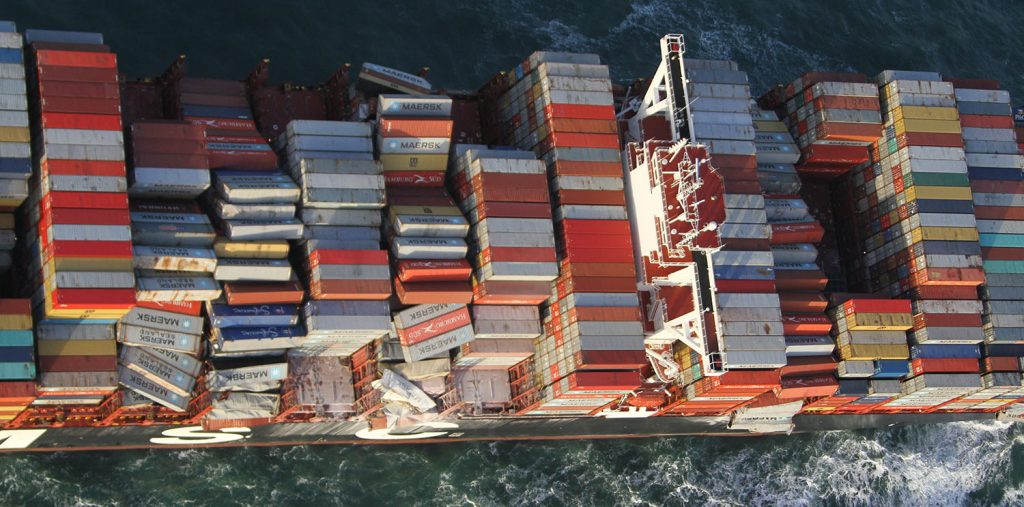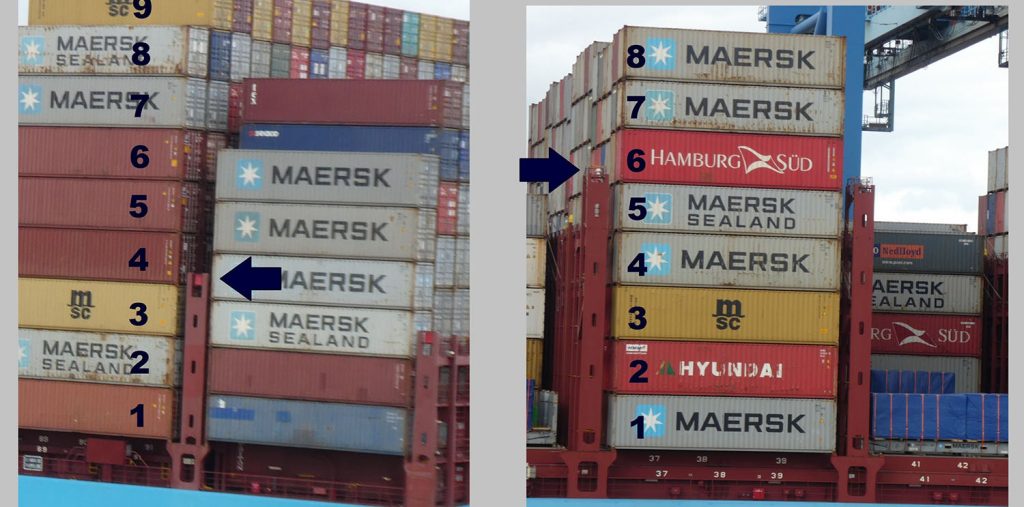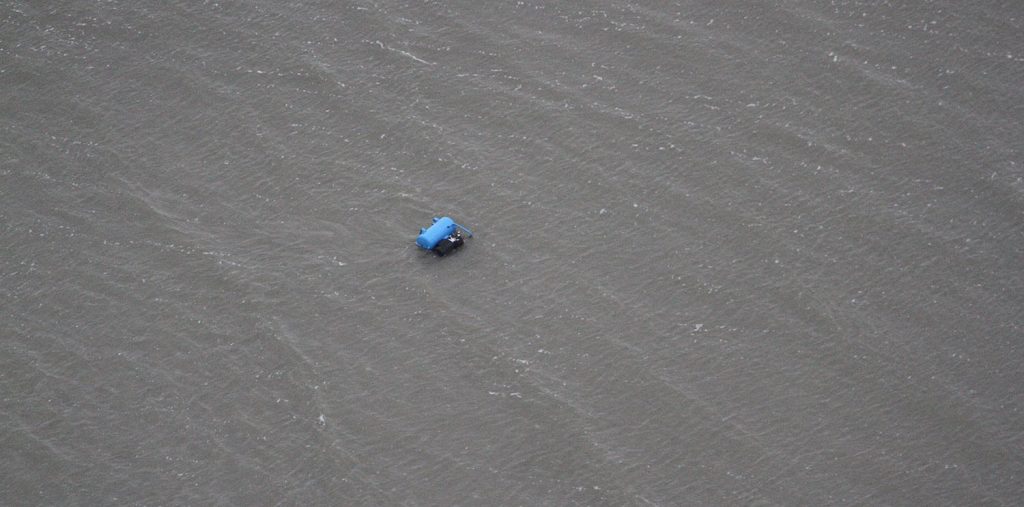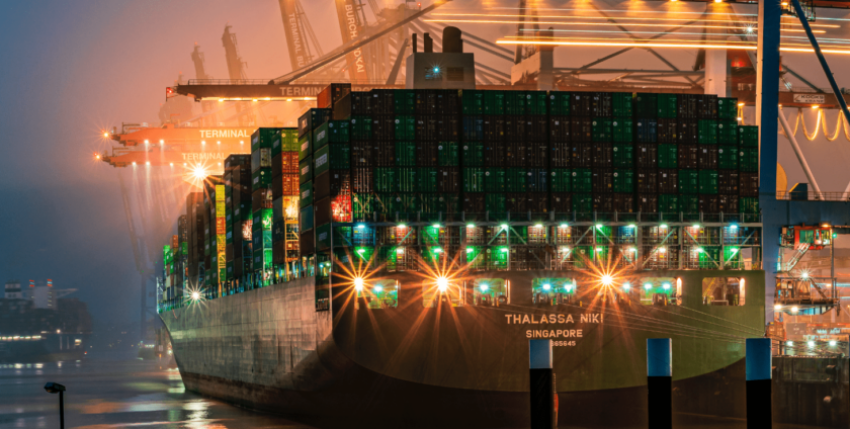The MSC Zoe lost hundreds of containers in the North Sea in 2019. Are similar accidents inevitable?
The MSC Zoe accident, in which more than 342 containers went overboard off the Frisian Islands on the night of 2 January 2019, was apparently caused by the extreme rolling movements of the container ship in the stormy sea. At least that is the preliminary conclusion of the Federal Bureau of Maritime Casualty Investigation (BSU) in Hamburg. According to the BSU, it was assumed that the huge ship rolled back and forth so much in the choppy sea that the straps on the containers could no longer withstand the enormous loads and broke. However, the BSU's investigations were not yet complete on 16 May 2019.
Shipping expert Dieter Becker took a closer look at the cause of the damage and came to a remarkable conclusion. Containers are generally secured on deck with twistlocks and secured with tensioned lashing rods. The twistlocks are used to couple the containers on top of each other in the corner areas, forming stacking towers with up to eight or nine layers. Without lashings, these stacking towers would break free and topple over towards the deck in a domino effect when tilted by heavy seas, whereby static and dynamic forces are the trigger.

The centre of gravity of three common containers is approximately 2.44 x 1.5 = 3.66 m and not approximately 2.44 x 0.5 = 1.22 m as with proper lashing. This triple leverage leads to demolition. To prevent this, container scaffolding is arranged across the deck between the individual container stacks. From these container frames, the containers are braced diagonally at the corner points with lashing rods and turnbuckles to prevent them from toppling over. Due to the height above deck on the MSC Zoe, it was only possible to secure the containers with lashing rods up to the fifth tier.
The containers above are then only connected with twistlocks at the corners, forming towering stacks of containers without any bracing to the container frame. the lowest twistlocks of these free-standing stacks of containers can be subjected to such acceleration forces in rough seas when the container ship rolls that the breaking load of the twistlocks is exceeded and the upper containers fall off. Photos show units of three crashed containers that are still floating in the sea coupled with twistlocks.
Calculations have shown that in an inclined position, taking into account the law of leverage and the considerable acceleration forces when the rolling motion is reversed, such high loads arise that they can no longer be held by the twistlocks. The twistlocks break on one side and form the tipping point on the opposite side. The photos of the MSC Zoe show that no container that was secured with lashing rods crashed. Consequently, the container support frame of the MSC Zoe is not high enough.
This incident is not an isolated case. The Asian shipbuilding industry has already reacted to this. Dieter Becker had the opportunity to inspect the container ship OOCL Hong Kong at JadeWeserPort in Wilhelmshaven at the beginning of the year. On this newer container ship (built in 2017, the MSC Zoe was built in 2015), the container frames are significantly higher, meaning that the containers can be braced up to the seventh layer. The expert believes that lessons have been learnt from previous container crashes. According to my findings, the securing of the containers on deck of the OOCL Hong Kong at JadeWeserPort in Wilhelmshaven was flawless. Becker therefore believes that a repeat of the accident that occurred on the MSC Zoe, which was built in 2015, cannot happen on the OOCL Hong Kong.
As a rule, the BSU's investigation report should be available one year after an accident. As in the case of the Glory Amsterdam, this was not the case, as there was a 'Joint Interim Investigation Report' dated 12 December 2019, which was prepared jointly by the Dutch Safety Board and the German Federal Bureau of Maritime Casualty Investigation. This report shows that the BSU commissioned the Hamburg University of Technology (TUHH) to answer the following questions, among others
- What is the probable cause of the container loss and what rolling angles are likely to have occurred?
- How great were the lateral accelerations of the cargo and are they great enough to explain the container loss?

In the opinion of shipping expert Becker, the cause of the containers falling overboard was not investigated until a year later. In the meantime, the BSU's report on the "overboarding of containers from the MSC Zoe" dated 25 June 2020 has been published, which, in his opinion, assumes conditions that were not met. This refers to the statement in the BSU report (page 78) that the containers were secured by twistlocks and lashing bars were secured, which is demonstrably not true.
The lashing rods could only be attached to the deck up to the fifth layer because the container support frames were too low. As a result, the upper layers fell sideways as a "complete package" due to static and dynamic forces. Packages consisting of three containers lay crashed on deck, while others floated in the sea.

What has changed to date is that only new container ships have higher support frames that allow lashing up to the seventh layer. Older container ships with low support frames continue to operate. The difference in the height of the support frames can be clearly seen in photos taken by Dieter Becker in Bremerhaven in 2019. The two container ships, of the same size and from the same shipping company, happened to be moored one behind the other, with the ship on the right being of more recent construction. According to the expert Becker, the fact that entire stacks of containers on the MSC Zoe also toppled sideways in a domino effect is due to the fact that they were not lashed at all, although it was possible to do so, at least in the lower section. Container ships are still travelling with support scaffolding that is too low, so Becker assumes that economic reasons do not permit official clarification. This means that further accidents are inevitable. This could be counteracted relatively easily if the scaffolding height of container ships with insufficient scaffolding was increased accordingly and the stacking height reduced until then.
Text: Dieter Becker; Photos: Dutch Coast Guard, Dieter Becker










